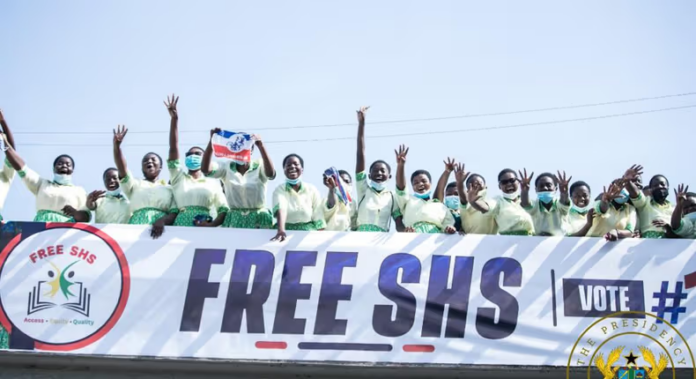|
Getting your Trinity Audio player ready...
|
The Africa Education Watch, an education-focused think tank, has unveiled compelling statistics regarding the impact of the free Senior High School (SHS) policy from the academic years spanning 2017/18 to 2022/23. According to their report, an impressive 2.5 million students have been beneficiaries of this initiative during this period.
The implementation of the free SHS policy since its inception in 2017 has notably contributed to a substantial surge in secondary school enrolment, skyrocketing from 813,448 students in the 2016/17 academic year to a staggering 1.3 million students by the 2022/23 academic session.
The report further highlights a significant increase in annual enrolments, with an average of 422,940 students admitted per year, compared to the preceding six years’ average of 260,490 annual enrolments. However, amidst this surge, the data also reveals that a concerning number of 194,862 candidates failed to take up their admission offers during the period spanning the 2019/20 to 2022/23 academic years.
Delving into the financial aspect, Africa Education Watch underscores the substantial government allocation and expenditure towards the free SHS policy. Over the period spanning from the 2017/23 to 2023/24 academic years, a total of GH¢12.88 billion was earmarked for the initiative, averaging GH¢1.84 billion annually.
Notably, between the 2017/21 and 2021/22 academic years, GH¢5.3 billion was expended, averaging GH¢1.06 billion annually. This marks a considerable increase in budgetary allocation, rising by 639 percent in nominal terms from GH¢400 million in 2017 to GH¢2.95 billion in 2023. Adjusting for inflation, the increment reduces to 443 percent, indicating a substantial investment in the policy over the years.
In light of these findings, Africa Education Watch advocates for a reevaluation of the free SHS policy, suggesting that parents opting for their children to reside in boarding houses should bear the associated fees. This recommendation reflects a nuanced approach aimed at ensuring sustainability and equitable distribution of resources within the education sector.





